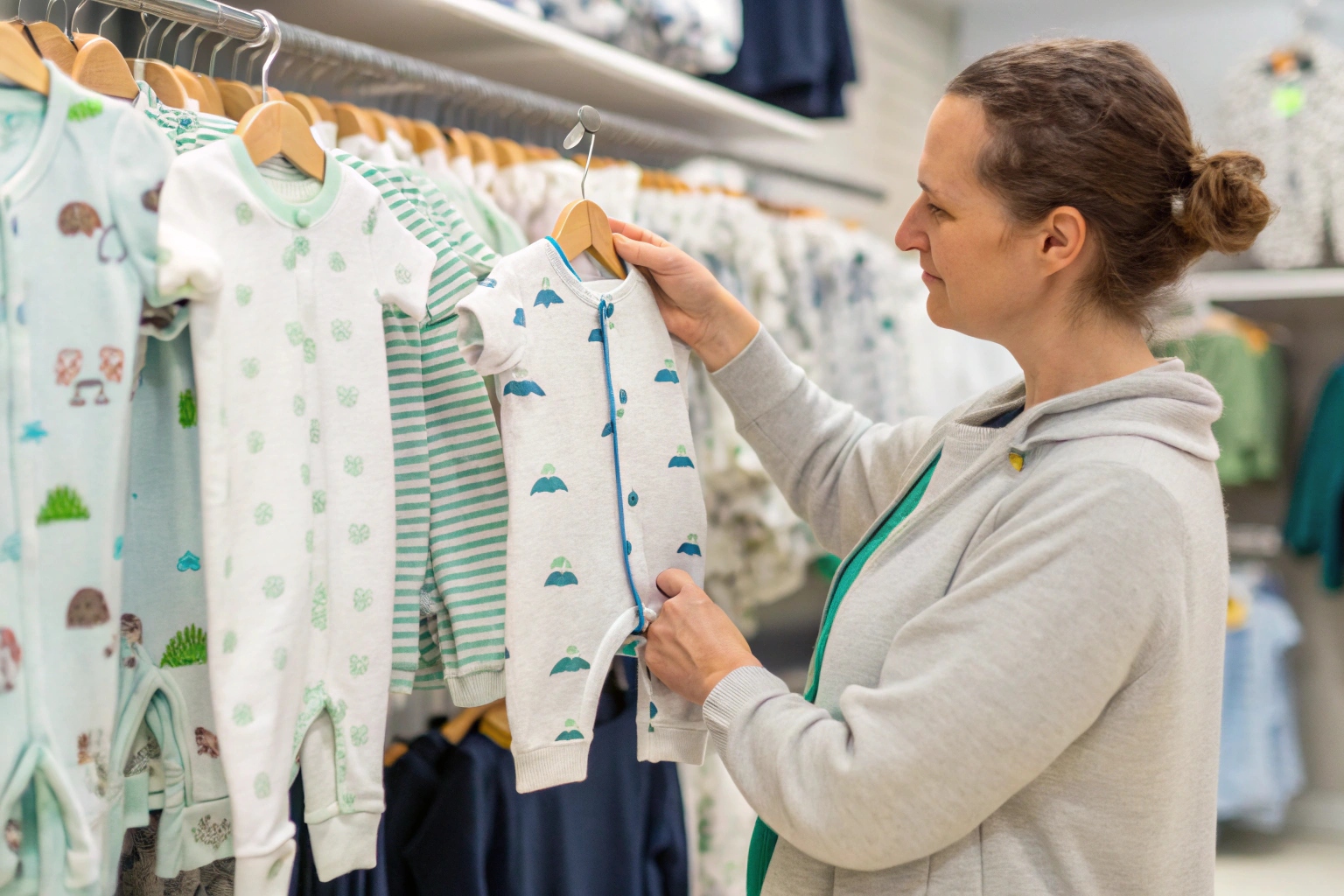Rows of pastel onesies used to be enough. But in 2025, babywear buyers want more than “cute.” They want meaning, style, and identity.
Generic babywear no longer satisfies modern parents. Today’s buyers demand designs that reflect their values, lifestyles, and stories—pushing brands beyond mass-market basics.
Let’s explore why cookie-cutter collections are fading—and what babywear brands must do to stay relevant and build lasting loyalty.
How Modern Parents Shop for Unique and Functional Babywear?
The new generation of parents isn’t just buying clothes—they’re curating a wardrobe that fits their family’s values and routines.
Today’s parents want babywear that’s both distinct and practical. They look for function, meaning, and individuality—not just standard shapes and prints.
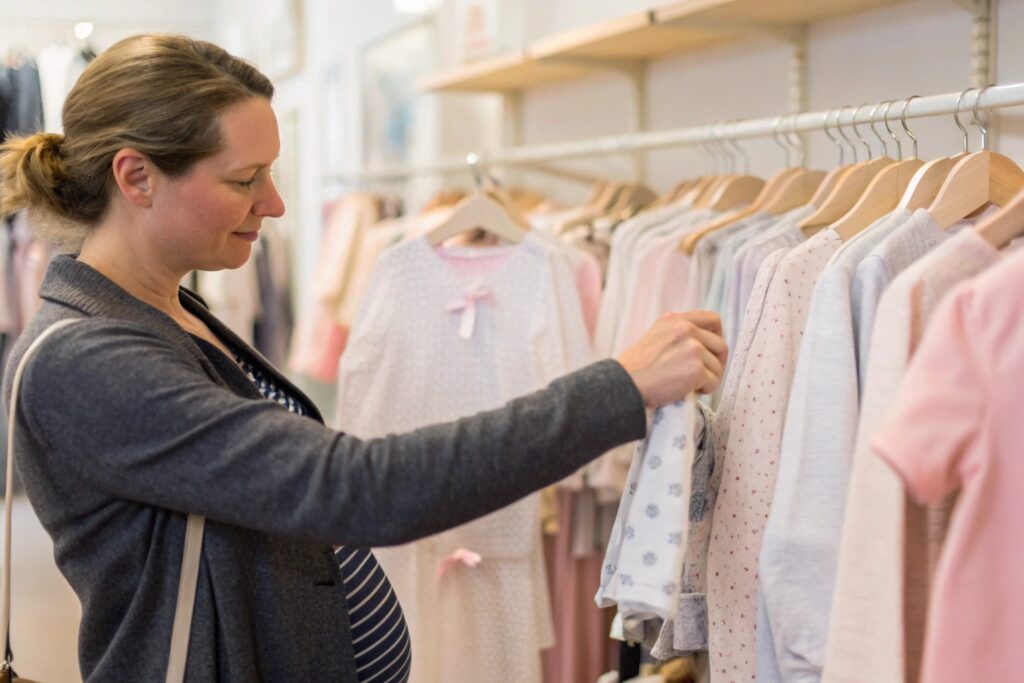
What features do modern parents prioritize when shopping for baby clothing?
We spoke with dozens of parents and brand buyers who consistently mentioned the same must-haves:
| Feature Category | What Parents Look For |
|---|---|
| Function | Stretchable, easy to change, temperature-safe |
| Fit & Comfort | Soft seams, tagless labels, room to move |
| Uniqueness | Limited-run prints, non-mainstream palettes |
| Values | Organic fabrics, ethical sourcing, gender-neutral options |
Mass-produced basics still sell—but they don’t excite. Parents want “that romper no one else has.” They search Instagram, Etsy, and niche boutiques instead of department store chains.
Why do functional design and unique visuals go hand-in-hand now?
Because parents want pieces that look special and work well. Think: a kimono-style romper with easy snaps and a celestial print. Or a muslin swaddle with cultural motifs. It’s not about overdesigning—it’s about thoughtfulness.
Babywear is now part of the parenting identity. That changes how it’s chosen.
Why Personalization and Storytelling Matter More Than Ever?
With AI-generated collections and mass fast fashion flooding feeds, originality is rare—and more valuable than ever.
Personalization and storytelling give babywear emotional depth. They turn garments into memories and brands into trusted companions.
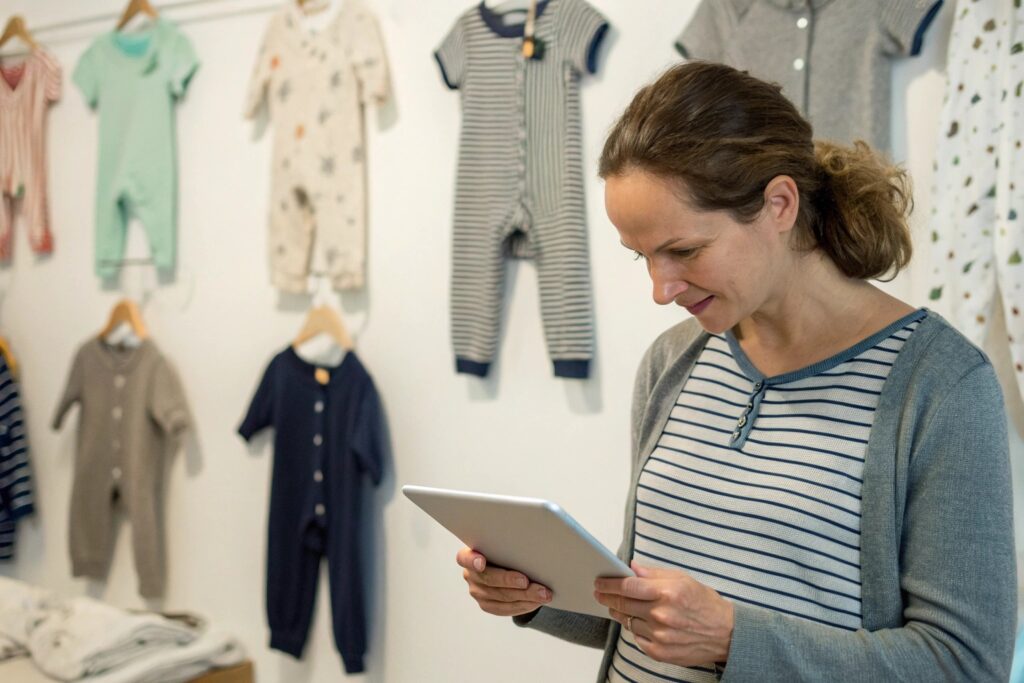
How does personalization build stronger brand attachment?
When a onesie carries a child’s name, birth sign, or family tradition, it becomes more than clothing—it becomes a keepsake. Parents feel ownership and connection.
Popular options include:
- Name embroidery or monogramming
- Custom color selections for trims and cuffs
- Limited-edition prints tied to seasons or heritage
- Collections inspired by real parenting stories
Brands that offer even small personalization options stand out in a crowded feed.
What role does storytelling play in modern babywear branding?
It gives meaning to the product. Instead of “Here’s a onesie,” storytelling says:
“This fabric was hand-printed by a mother in Jaipur.”
“This color palette honors Lunar New Year traditions.”
“This design came from a letter written by a new dad.”
Even minimalist brands build loyalty with behind-the-scenes content—showing where and how pieces are made, or what inspired a new collection.
It’s not just marketing—it’s memory-making.
What Today’s Consumers Expect from Baby Clothing Brands?
Cute isn’t enough anymore. Today’s consumers want information, intention, and interaction from every brand they follow.
In 2025, babywear buyers expect clear values, smart design, transparent sourcing, and emotional resonance—alongside affordability and speed.
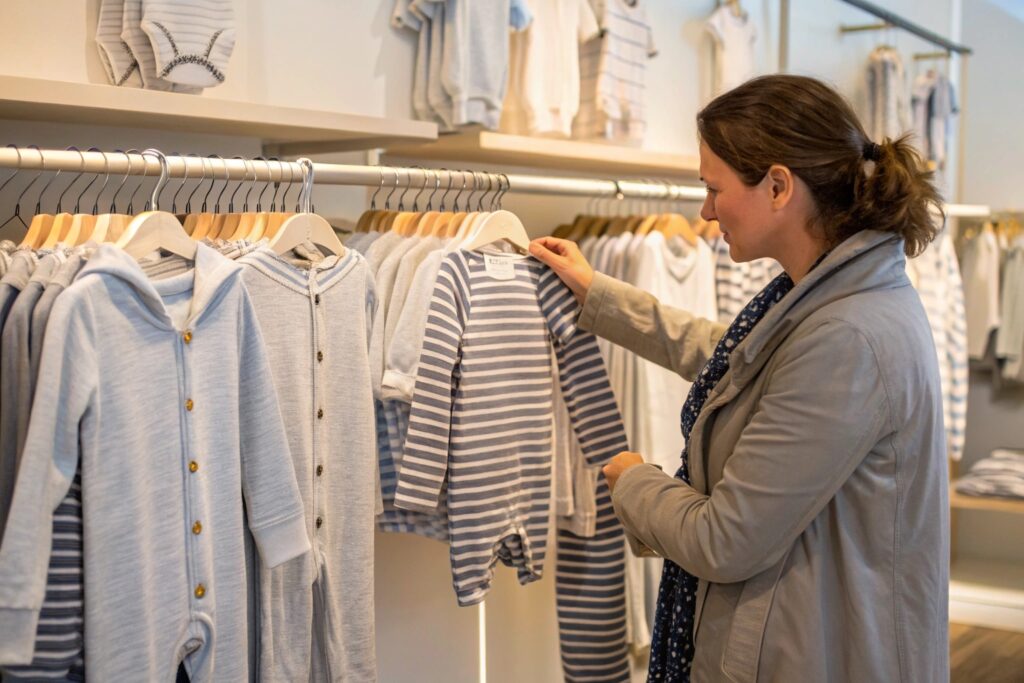
What brand traits do today’s buyers look for before they click “Buy”?
| Expectation | What Buyers Want |
|---|---|
| Fabric Transparency | OEKO-TEX, GOTS, allergy-safe |
| Fit & Functionality | True-to-size guides, snap placements, layering logic |
| Community Engagement | Parenting advice, real photos, active replies |
| Ethical Commitment | Certifications, supply chain info, carbon offsetting |
| Consistency | Cohesive style, repeatable quality |
Today’s parent doesn’t just browse—they research. And brands that don’t share enough lose trust fast.
How are brands meeting these rising expectations?
- Adding detailed product pages: Wash tests, certifications, size reviews
- Hosting Q&As on Instagram or in newsletters
- Sharing real parent photos: Not just staged photoshoots
- Building feedback loops: Letting buyers vote on new designs
By making parents feel seen and heard, brands build more than sales—they build tribes.
How Generic Designs Hurt Brand Loyalty and Repeat Sales?
You can get away with “cute and basic” once—but that won’t keep parents coming back.
When babywear designs feel mass-produced and interchangeable, customers lose connection. Without fresh ideas or identity, brands become forgettable.
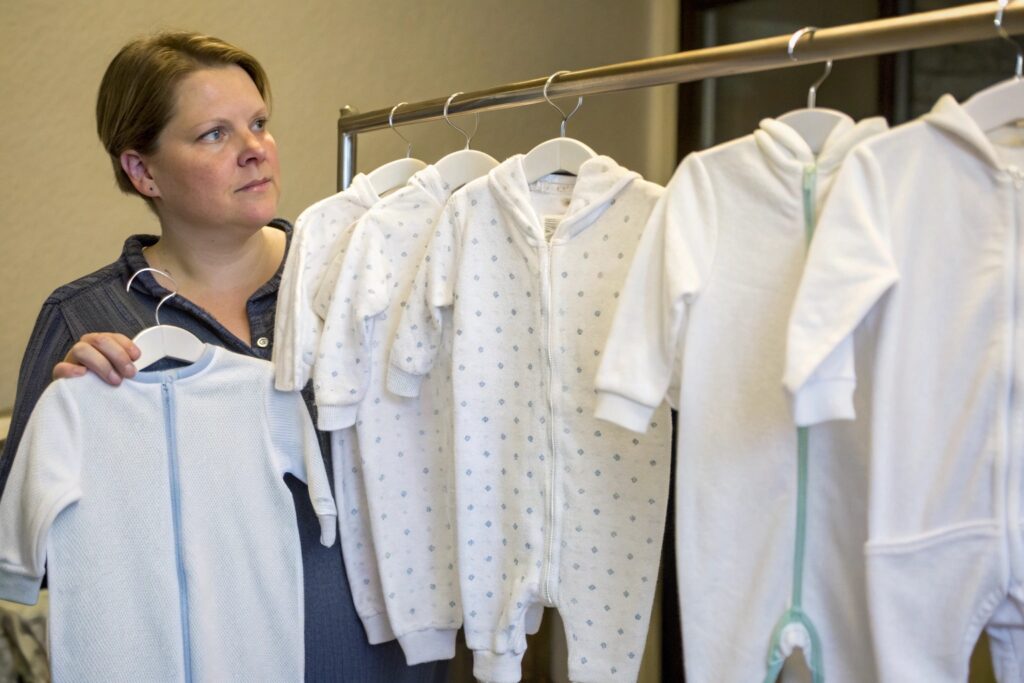
What happens when brands rely too heavily on cookie-cutter babywear?
- No emotional value: Parents feel no need to share or recommend
- Poor engagement: Generic content performs worse on social media
- One-time buyers: No loyalty without distinct brand memory
- Price wars: If it’s all the same, buyers just chase the lowest price
Even worse, generic designs weaken your brand identity. If your babywear could be swapped with a competitor’s and no one would notice—your brand is at risk.
| Brand Style Trait | Generic Brands | Standout Brands |
|---|---|---|
| Prints | Common, overused icons | Illustrated, theme-based stories |
| Colors | Basic pink/blue | Curated, gender-inclusive |
| Packaging | Plain plastic | Branded keepsake box |
| Voice | Product-focused | Parent-empathetic messaging |
How can brands transition away from generic design without breaking the bank?
- Start with one themed capsule (e.g. “First Forest” or “Coastal Calm”)
- Offer limited-run designs every quarter
- Collaborate with artists or parent influencers
- Share the inspiration story behind each drop
It’s not about complexity—it’s about intention.
Conclusion
Cookie-cutter babywear is out. In 2025, brands that thrive will be those that offer something thoughtful, personal, and distinctly human. In a crowded market, meaning—not mass—wins.

